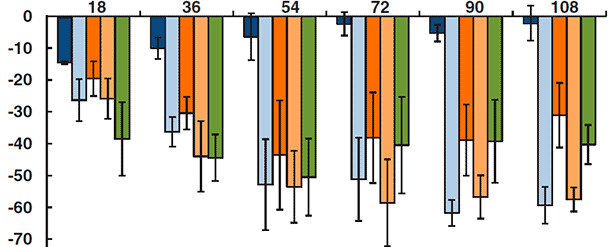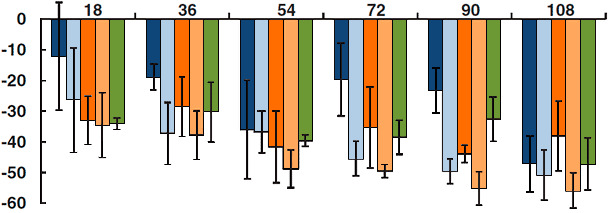Article
The effect of infection order of porcine circovirus type 2 and porcine reproductive and respiratory syndrome virus on dually infected swine alveolar macrophages. Tsai YC, Chang HW, Jeng CR, Lin TL, Lin CM, Wan CH, Pang VF (2012). BMC Veterinary Research, 8:174

Article brief
What are they studying?
This in-vitro study was designed to determine if different co-infection orders with PCV2 and PRRSV would affect the functions of swine alveolar macrophages (AMs)
How is it done?
A bronchoalveolar lavage and collection of AMs was performed on 12 SPF pigs (5-6 weeks old).
Then, the AMs were infected using six different protocols: PCV2, PRRSV, PCV2 and PRRSV (18h later), PRRSV and PCV2 (18h later), PCV2 and PRRSV (simultaneously), and Mock.
AMs functions such as cell viability, cytopathic effects, antigen-containing rates, phagocytotic and microbial killing capabilities, cytokine profiles and FasL transcripts level where measured at different times post-infection.
What are the results?
A transient decrease in phagocytosis rate was observed in the PCV2 group vs. the Mock group.
However, a phagocytosis rate decrease was observed at any time post-infection for all PRRSV inoculated groups, and it was lower than that of the Mock and PCV2 groups. Moreover, the phagocytosis rate at 90 or 108 hours post-infection in the PRRSV group was lower than in the groups where PCV2 came before or simultaneously with PRRSV.
Hours post single or primary virus inoculation


Graphic 1. Changes in the phagocytotic capability of swine alveolar macrophages at several times post-infection by PCV2, PRRSV, PCV2 and PRRSV, PRRSV and PCV2, PCV2 and PRRSV (simultaneously), and Mock.
Data are expressed as the percentage difference to the Mock group.
A pre-existing or co-existing PCV2 infection could interfere with or hinder, at least partially, the PRRSV infection. PCV2 affected PRRSV replication but also reduced the adverse effects induced by PRRSV on the phagocytosis capability of swine AMs.
However, when a PRRSV infection was established prior to PCV2 inoculation, the partial inhibition of the PRRSV infection (by PCV2) was not seen. On the other hand, PRRSV could enhance PCV2 replication.
The microbicidal rate of the PCV2 and/or PRRSV inoculated groups (except PCV2 at 18 h post-infection) where lower than in the Mock group. There was a relatively lower microbicidal capacity in the group inoculated first with PRRSV and then with PCV2 than in the PRRSV group and the groups where PCV2 came before or simultaneously with PRRSV.
Hours post single or primary virus inoculation


Graphic 2. Changes in microbial killing capability of swine alveolar macrophages at several times post-infectionby PCV2, PRRSV, PCV2 and PRRSV, PRRSV and PCV2, PCV2 and PRRSV (simultaneously), and Mock. Data are expressed as the percentage difference to the Mock group.
What implications does this paper have?
The results confirm that the interactions of different viruses (and times of infection) are complicated and can cause a variety of clinical pictures in the field.
PCV2 could interfere with PRRSv if it infects the animal before the PRRSv infection is established.
The reduced microbicidal capacity of pig AMs in all inoculated groups suggests that infection with PCV2 and/or PRRSv may favour the proliferation and survival of other opportunistic or secondary pathogens in the pigs lungs.
|
The porcine respiratory disease complex affects many farms. The symptoms observed in the field are usually the result of different combinations of viral and bacterial infections. This would explain the fact that the clinical pictures found in practice are usually a lot more serious than those caused by the individual infections described in the literature. In order to establish efficient prophylactic plans, and since the sequence of the infections can play a major role in the seriousness of the disease, we need to know more about the dynamics of these combinations to help us decide the preventative measures implementation order. This article proves that, at least "in vitro" and in relation to the respiratory disease complex, order matters. In PRRSV/PCV2 mixed infections, the consequences are worse when PRRSV infection occurs before or concurrently to PCV2 infection, than when the sequence is reversed. Therefore, in cases of porcine respiratory disease complex (PRDC) the priority should be controlling the infection by PRRSv. With good control of PRRS, ie, avoiding the production of viraemic pigs, we should be able to postpone the time when viral recirculation occurs, consequently altering the sequence of infection —since the circulation of PCV2 would precede that of PRRSv. Once this is achieved, and according to the conclusions of the article, both the phagocytic and the microbicidal capacity of alveolar macrophages would be less compromised. In other words, pigs ability to fight infections, both viral and bacterial, would be greater. As mentioned previously, proper control measures for PRRS must contemplate the homogenization of the sows immune status and, to this end, correct adaptation of gilts is an essential element. In addition, we musn't forget all the measures designed to prevent internal spread of the virus, the main one being a strict management of the batches. We must remember that viruses are not the only pathogenic agents affecting pigs with a respiratory complex; bacteria (secondary infections) are also present in many cases, and they will determine the severity of the process. Control of these secondary infections must be obviously based on antimicrobial treatments applied in time, but if we could delay the recirculation of PRRS virus, the animal itself would maintain a superior antimicrobial ability, which would allow for better results. |








